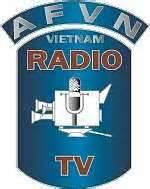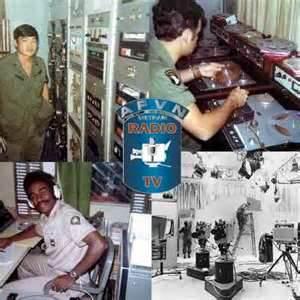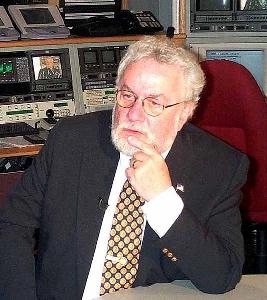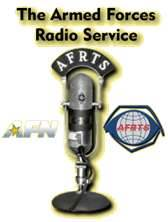
Introduction
Historians choose to record what is interesting and important to them. In the process much that needs to be written is often left out and not told. This is perhaps not the fault of the historian; rather it is the nature of his profession. He is confronted with massive amounts of information and is compelled to pick and choose. Nevertheless, some stories must be told. The history of the American Forces Radio and Television Service is one of them.
Most people outside of the Armed Forces probably have never heard of AFRTS. It is the story of a seemingly small organization that does an outstanding job serving the Armed Forces men and women, the diplomatic staff and their families in a myriad of places around the world and at sea. It all started in 1942 in the midst of World War II.
The radio service for the soldiers, however, was not a War Department idea. General George C. Marshall had been thinking about it as a means of educating and informing the troops. He believed that the men and women in uniform needed to know why they were fighting. Radio, Marshall reasoned, was the best medium to do that.
Historians choose to record what is interesting and important to them. In the process much that needs to be written is often left out and not told. This is perhaps not the fault of the historian; rather it is the nature of his profession. He is confronted with massive amounts of information and is compelled to pick and choose. Nevertheless, some stories must be told. The history of the American Forces Radio and Television Service is one of them.
Most people outside of the Armed Forces probably have never heard of AFRTS. It is the story of a seemingly small organization that does an outstanding job serving the Armed Forces men and women, the diplomatic staff and their families in a myriad of places around the world and at sea. It all started in 1942 in the midst of World War II.
The radio service for the soldiers, however, was not a War Department idea. General George C. Marshall had been thinking about it as a means of educating and informing the troops. He believed that the men and women in uniform needed to know why they were fighting. Radio, Marshall reasoned, was the best medium to do that.

Everyone in Vietnam listened to the Armed Forces Vietnam Network -- 540 on the AM dial, 99 on the FM dial.

AFRTS in Vietnam (1962-1973) - Also known as AFVN
As the American military presence in the Vietnam conflict increased, AFRTS opened radio and (later) television stations there. One of the purposes was, of course, to counter Radio Hanoi propaganda. However, the main aim was to provide news, information and entertainment to the U.S. personnel serving in-country.
At one stage, the Armed Forces Vietnam Network (AFVN) broadcast to some 500,000 service personnel and U.S. civilians. It was also in Vietnam that a number of AFRTS personnel became war-related casualties. When an Air Force jet fighter crashed into the AFVN station in Udorn, Thailand, nine AFRTS people were killed. In addition, station staff at Da Nang was captured and spent time as prisoners of the North Vietnamese.
For its Vietnam broadcasts, AFRTS developed a program along the lines of G. I. Jive of World War II. This new program, hosted by Chris Noel, was titled A Date with Chris and was an instant hit with the troops. By this time, a good many of the programs AFRTS broadcast were produced internally by local disc jockeys making hour-long music shows, which even included anti-war songs. Beginning in 1971 AFRTS began to pull out of Vietnam. The last station to close was in Saigon in 1973.
As the American military presence in the Vietnam conflict increased, AFRTS opened radio and (later) television stations there. One of the purposes was, of course, to counter Radio Hanoi propaganda. However, the main aim was to provide news, information and entertainment to the U.S. personnel serving in-country.
At one stage, the Armed Forces Vietnam Network (AFVN) broadcast to some 500,000 service personnel and U.S. civilians. It was also in Vietnam that a number of AFRTS personnel became war-related casualties. When an Air Force jet fighter crashed into the AFVN station in Udorn, Thailand, nine AFRTS people were killed. In addition, station staff at Da Nang was captured and spent time as prisoners of the North Vietnamese.
For its Vietnam broadcasts, AFRTS developed a program along the lines of G. I. Jive of World War II. This new program, hosted by Chris Noel, was titled A Date with Chris and was an instant hit with the troops. By this time, a good many of the programs AFRTS broadcast were produced internally by local disc jockeys making hour-long music shows, which even included anti-war songs. Beginning in 1971 AFRTS began to pull out of Vietnam. The last station to close was in Saigon in 1973.
Everyone in Vietnam listened to the Armed Forces Vietnam Network -- 540 on the AM dial, 99 on the FM dial.


American Forces Vietnam Network was created as a morale-boosting military radio station for servicemen and women in Vietnam. AFVN broadcast 24 hours a day, seven days a week for over 10 years; it began broadcasting on August 15, 1962 and ended in March of 1973. After this, it changed its name and was run by civilians in Saigon. AFVN was a forum for news, comedy and entertainment for the soldiers during the Vietnam War. This collection includes clips from AFVN news shows, ads, advice for soldiers in Vietnam (about drinking water, VD, sending letters and packages and other such interesting blips), DJ intros, and short philosophical and morale-boosting segments.
Perhaps the best known program became the morning "Dawn Buster" program, (the brainchild of Chief Petty Officer Bryant Arbuckle in 1962) thanks to the popularity of the sign-on slogan "Gooooood Morning, Vietnam" (which was initiated by Adrian Cronauer and later became the basis for the film Good Morning Vietnam starring Robin Williams). Among the notable people who were AFVN disc jockeys were Lee Hansen and Pat Sajak.
Perhaps the best known program became the morning "Dawn Buster" program, (the brainchild of Chief Petty Officer Bryant Arbuckle in 1962) thanks to the popularity of the sign-on slogan "Gooooood Morning, Vietnam" (which was initiated by Adrian Cronauer and later became the basis for the film Good Morning Vietnam starring Robin Williams). Among the notable people who were AFVN disc jockeys were Lee Hansen and Pat Sajak.
Click on arrow, bottom left, to play video.
Turn on your SPEAKERS
Turn on your SPEAKERS




Clip from the movie " Good Morning Vietnam"
Best scene from the movie " Good Morning Vietnam"
Armed Forces Radio in Vietnam..AFR-Saigon went on the air at 0600 hours on 15 August 1962 from studios in the "Rex" Hotel in downtown Saigon. It broadcast 18 hours a day using a transmitter and broadcast equipment
borrowed from US and Vietnamese military and civilian agencies. It was operated by a 5 man crew and several volunteer announcers and newsmen.
By the fall of 1964, the station had moved to permanent facilities at the "Brink" Hotel and expanded staff of 17 full-time members. On the 24th of December 1964 the Viet Cong struck their first blow at the station. Terrorists set off 250 pounds of explosives at the Brink and damaged a large section of the building. TV made it's debut in Vietnam
on 7 February 1966 as three (3) C-121 aircraft were outfitted with broadcast equipment. The "Blue Eagle" airborne were used to broadcast until ground facilities were a fixed site in Saigon. Saigon became operational for TV on 25 September and 21 and 25 October of 1966 respectively. Two year's later..on Christmas 1966, to the exact day, the
new Saigon station was again attacked. Small arms fire ripped holes in the building but no one was injured. Early 1967 television also became operational at Pleiku, Hue, Tuy Hoa and Nha Trang's Hon Tre Island. On 3 May 1968 the VC struck again..This time a 250 pound plastic explosive concealed in a taxi were set off not far from the Saigon station. No one was injured but the building was damaged, broadcasting was temporarily interrupted. The Hue station was overrun in 1968 as the TET offensive was in progress. One AFVN man was reported killed and five were captured. The Hue (Hae) station was then moved to Quang-Tri and resumed broadcasting in December of 1968. The Chu Lie station came about in March of 1969 and later converted to a TV translator operation, rebroadcasting the Da Nang TV signal. The Quang Tri station was closed in July 1971 and relocated in the Hue-Phu Bai area. The key station increased to 23 hour's a day from Saigon. Later to the 24 hour period. So, as you can see..the Armed Force's Radio and Television service from Saigon, and later named the American Forces Vietnam Network (AFVN) has quiet a history from the start to it's finish of basically 10 year's..Informing and entertaining the troop's during wartime...Radio as well as TV service. Civilian as well as Army, Marine's, Navy and Air Force personnel ran the station's at Saigon as well as it's other detachment station's...and civilian personnel on board as well...from the Delta to the DMZ. Some were killed, some were captured...but all gave their best while on the job..from news, sport's, radio and TV special's..and from music programs...within the 10 year period some served for a year, some 2 or 3 years..but there's hundreds of broadcast and engineers staff that served during the war...some are alive and well today, some have passed on from cancer, heart attacks, or from natural cause's...some went into other area of professions..and some even today are still in the broadcast business thru-out the United States. The Armed Forces Radio and Television service is based now out of California...and mainly now with AFN-Europe..(station's in Germany, and other area's in Europe as well as in southeast Asia)...still has the job of informing and entertaining troop's..When a war break's out..like in Saudi...and with Iraq....The Armed Force's Radio and TV service set up Radio for troop's there...with mobile van transmitter station's...so even now...or in the mid-east..plane's carry a message...in one way or the other..the "beat goes on"..., I hope this additional info has given you a better understanding of the history of AFVN radio in Vietnam from the early 60's to it's end in1975...
borrowed from US and Vietnamese military and civilian agencies. It was operated by a 5 man crew and several volunteer announcers and newsmen.
By the fall of 1964, the station had moved to permanent facilities at the "Brink" Hotel and expanded staff of 17 full-time members. On the 24th of December 1964 the Viet Cong struck their first blow at the station. Terrorists set off 250 pounds of explosives at the Brink and damaged a large section of the building. TV made it's debut in Vietnam
on 7 February 1966 as three (3) C-121 aircraft were outfitted with broadcast equipment. The "Blue Eagle" airborne were used to broadcast until ground facilities were a fixed site in Saigon. Saigon became operational for TV on 25 September and 21 and 25 October of 1966 respectively. Two year's later..on Christmas 1966, to the exact day, the
new Saigon station was again attacked. Small arms fire ripped holes in the building but no one was injured. Early 1967 television also became operational at Pleiku, Hue, Tuy Hoa and Nha Trang's Hon Tre Island. On 3 May 1968 the VC struck again..This time a 250 pound plastic explosive concealed in a taxi were set off not far from the Saigon station. No one was injured but the building was damaged, broadcasting was temporarily interrupted. The Hue station was overrun in 1968 as the TET offensive was in progress. One AFVN man was reported killed and five were captured. The Hue (Hae) station was then moved to Quang-Tri and resumed broadcasting in December of 1968. The Chu Lie station came about in March of 1969 and later converted to a TV translator operation, rebroadcasting the Da Nang TV signal. The Quang Tri station was closed in July 1971 and relocated in the Hue-Phu Bai area. The key station increased to 23 hour's a day from Saigon. Later to the 24 hour period. So, as you can see..the Armed Force's Radio and Television service from Saigon, and later named the American Forces Vietnam Network (AFVN) has quiet a history from the start to it's finish of basically 10 year's..Informing and entertaining the troop's during wartime...Radio as well as TV service. Civilian as well as Army, Marine's, Navy and Air Force personnel ran the station's at Saigon as well as it's other detachment station's...and civilian personnel on board as well...from the Delta to the DMZ. Some were killed, some were captured...but all gave their best while on the job..from news, sport's, radio and TV special's..and from music programs...within the 10 year period some served for a year, some 2 or 3 years..but there's hundreds of broadcast and engineers staff that served during the war...some are alive and well today, some have passed on from cancer, heart attacks, or from natural cause's...some went into other area of professions..and some even today are still in the broadcast business thru-out the United States. The Armed Forces Radio and Television service is based now out of California...and mainly now with AFN-Europe..(station's in Germany, and other area's in Europe as well as in southeast Asia)...still has the job of informing and entertaining troop's..When a war break's out..like in Saudi...and with Iraq....The Armed Force's Radio and TV service set up Radio for troop's there...with mobile van transmitter station's...so even now...or in the mid-east..plane's carry a message...in one way or the other..the "beat goes on"..., I hope this additional info has given you a better understanding of the history of AFVN radio in Vietnam from the early 60's to it's end in1975...




